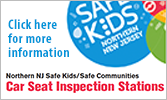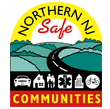Protecting Your Kids When They're Home Alone
Advice on keeping your home safe
Every year, nearly 4.5 million children ages 14 and under are injured in the home.
Nearly 7 million school-age children per year are regularly left home alone, according to a recent report by the Census Bureau. These days, children often take on more responsibility at an earlier age and as a result, feel that they are old enough to stay home alone.
Every year, nearly 4.5 million children ages 14 and under are injured in the home. The vast majority of unintentional injury-related deaths among children occurs in the evening hours when children are most likely to be out of school and unsupervised. Parents often struggle with the decision to leave their children home unsupervised as they weigh the child's ability to care for him or herself with risks that may arise from a child left home alone.
"Parents need to consider many factors when leaving a child home alone," said Heather Paul, Ph.D., executive director of the National SAFE KIDS Campaign. "Children mature at different rates, so it is crucial to evaluate your child's individual development as well as physical capabilities."
It is important to remember that the decision to leave children unattended may be subject to state law. Area child protection services can provide information on state child abuse and neglect laws that address the age children can legally be left home alone. Minimum age requirements for unattended children generally range from 12 to 13 years of age. The National SAFE KIDS Campaign recommends that children are not left alone before the age of 12.
Parents and caregivers should begin leaving children home alone progressively - for only a short time, at first, and stay relatively close to home.
To ensure a child's safety when staying at home alone, the National SAFE KIDS Campaign recommends parents and caregivers follow these safety tips:
- Place all emergency numbers (doctor, hospital, police department, fire department, poison control center, EMS) and the phone number of a friend or neighbor in a visible place near all phones.
- Point out potential hazards in your home such as electrical appliances and heating equipment and teach your child how to avoid injuries from them.
- Make sure your child knows where the smoke al arms and carbon monoxide alarms are located and knows your fire escape plan. Remind your child to get out of the house immediately if the smoke alarm or carbon monoxide alarm sounds and to call the fire department from a neighbor's house.
- Plan and practice two escape routes out of the house and each room. It is important to have an alternate escape route in case one is blocked by fire.
- Insist your child use the proper safety gear while cycling, in-line skating or skateboarding and that they always wear a helmet for these activities. Bicycle helmets have been shown to reduce the risk of head injury by as much as 85 percent and brain injury by as much as 88 percent.
- Show your child where the first aid kit is and how to use the items in it.
- Prepare a snack or meal for your child in advance, preferably one that does not need to be heated. If it must be heated, remind your child to turn off the oven or stove. Remind them to never leave a pot unattended while cooking.
- Tell the child where you will be, how you can be reached and when you will return home.
- If possible, leave your beeper or cellular phone number. Knowing your child can reach you in an instant will help put you, and your child, more at ease.
KJ Feury RN APN, C
karenjean.feury@atlantichealth.org
Phone: 973-971-4327
Fax: 973-290-7350




